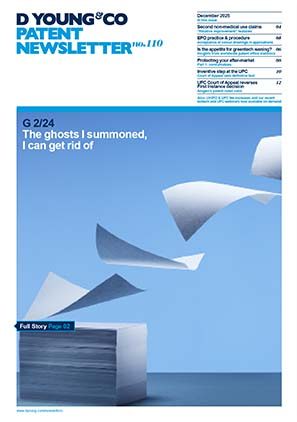UP & UPC statistics: unitary patent requests, Unified Patent Court opt out and revocation actions
It has now been more than three months since the Unified Patent Court (UPC) agreement came into force, in the most significant development to the European patent landscape for decades.
In brief, the new system firstly provides patent owners with the option of, following grant of a European patent application, obtaining a new unitary patent (UP), providing protection for up to seventeen contracting EU states of the UPC agreement in a single patent. The protection will depend on the ratification status of the EU states when the UP is granted. Secondly, the agreement establishes a new international UPC for patent litigation in states which are both members of the European Patent Convention (EPC) and member states of the UPC agreement.
This article will briefly review how the new system has operated in practice in its first few months in force. Detailed guides to both the new unitary patent and Unified Patent Court can be found on our website (see useful links below).
Unitary patent
As of mid-September 2023 around 560,000 existing European patents and applications have been opted-out from the jurisdiction of the UPC. The significant interest in opting out existing patents and applications from the jurisdiction of the UPC raises the question of how extensive the uptake of the new option to obtain a unitary patent would be once the system came into force.
Following an initial spike in July 2023 when the UPC came into force, the number of requests for a unitary patent now seem to have settled somewhat. In August 2023, 2,532 requests for unitary effect were filed. To put this figure in context, in 2022 the EPO granted around 80,000 patents, which is around 6,700 a month. Assuming patents are being granted at a similar rate in 2023, the number of requests in August 2023 would represent around 40% of granted patents.
| Country | European patent applications (2022) | UP requests (as of 17 September 2023) |
|---|---|---|
| USA | 48,088 | 1,327 |
| Germany | 24,684 | 1,834 |
| Japan | 21,576 | 319 |
| China | 19,041 | 492 |
| France | 10,900 | 738 |
| South Korea | 10,367 | 220 |
| Switzerland | 9,008 | 536 |
| Netherlands | 6,806 | 343 |
| UK | 5,697 | 410 |
Interestingly, there is a marked difference in early take-up of the unitary patent based on the country in which the applicant is based. The table above shows the number of requests for a unitary patent filed as of 17 September 2023, broken down by the country of residence of the applicant. The total number of European applications filed by applicants from each country in 2022 is provided for reference.
As can be seen, there appears to be a significantly higher take-up of the unitary patent thus far from applicants based in Europe, especially those in Germany, France, and the UK. In contrast, the take-up by applicants from outside Europe, such as in the USA and China, is lower. Notably, Japanese applicants have a particularly low number of requests thus far for unitary patents based on the total number of applications filed. It is not clear what is causing this differential in take-up.
One possible explanation could be that European applicants are more familiar with the new system and hence more confident in obtaining a unitary patent at this early stage. It could also be the case that protection in the many EU states provided by the unitary patent could be more attractive for European applicants compared with those from further afield, where protection in only a few of the larger European states may be desired. It should also be remembered that certain important European states are not covered by the unitary patent, such as the UK, Switzerland, and Spain.
More time will be needed for a clearer picture to emerge of how widely the unitary patent will be adopted. However, the initial data appears to suggest a reasonably high level of up-take, given that the system is only a few months old, especially amongst applicants based in Europe. Further statistics on the unitary patent can be found on the EPO’s website (see useful links below).
Unified Patent Court
Despite the large number of opt-outs filed by patent owners and applicants for their existing portfolios, there remain many European patents that have not been opted out and hence that fall under the UPC’s jurisdiction. Thus, we have already seen a number of actions being brought at the UPC in its first few months in operation. As of 17 September 2023, thirty-seven infringement actions and seven revocation actions have been initiated at the UPC. Since defendants have three months to file their defence, which may include a counterclaim for revocation, it is expected that the number of revocation actions will rise rapidly over the next few months as alleged infringers file their defence.
It remains to be seen whether the UPC will prove a popular forum for revocation actions where there is no corresponding infringement action. Only six such actions have been filed to date: for context, around 4,000 oppositions are filed each year at the EPO. This may change as more cases are heard by the UPC and the case law develops. Another factor could be the higher costs involved with revocation at the UPC: the fee is currently €20,000 for filing a revocation action at the UPC, compared with €880 for filing an opposition at the EPO.
The picture will no doubt become clearer over the coming months. We will continue to monitor developments and provide updates as necessary.
Useful links
- Guide to the unitary patent (UP): dycip.com/up-guide
- Guide to the Unified Patent Court (UPC): dycip.com/upc-guide
- UPC opt-out FAQs guide: dycip.com/upc-opt-out-faqs
- EPO statistics and trends: unitary patent: dycip.com/epo-up-statistics



